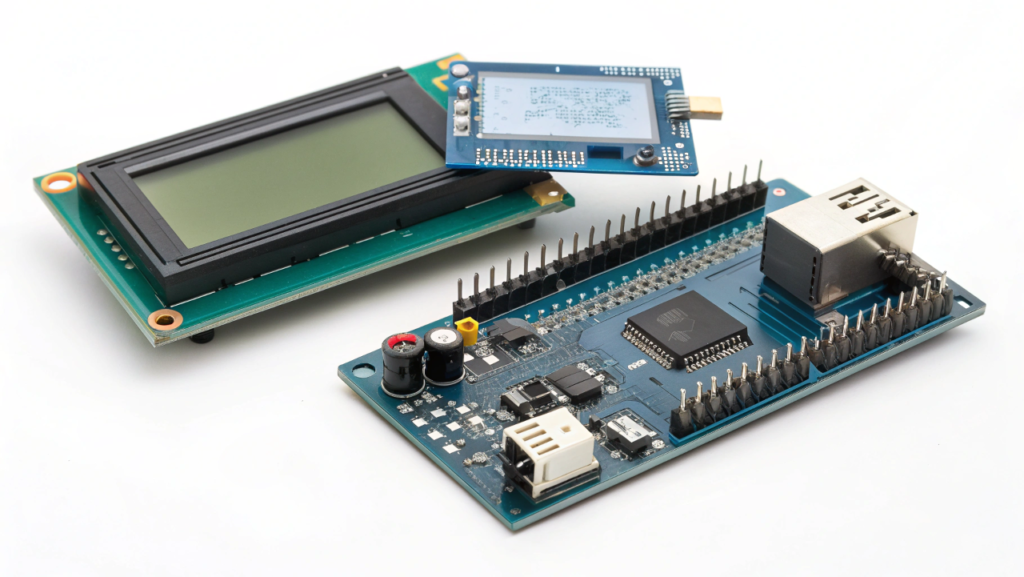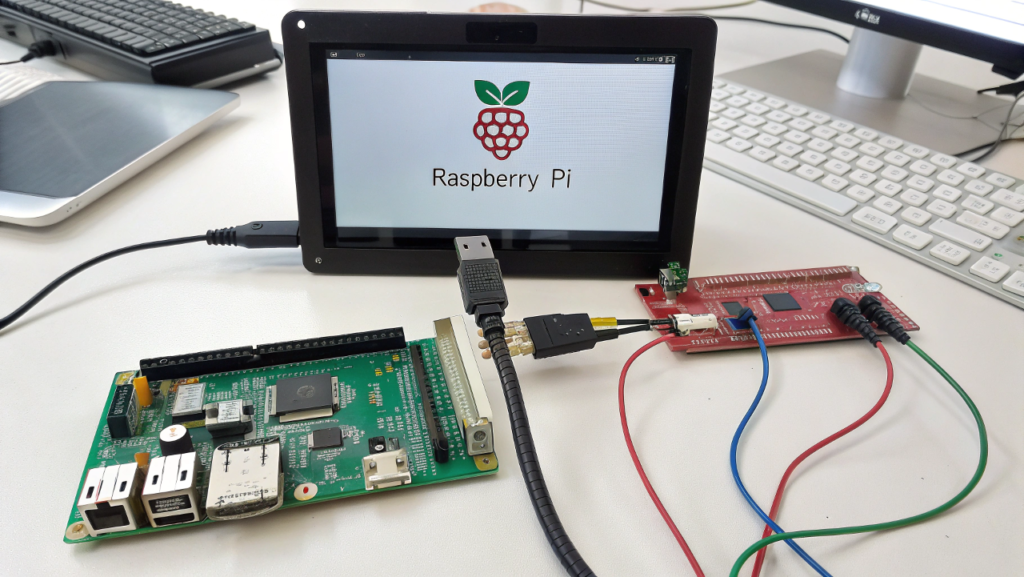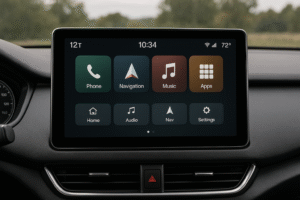
Arduino and Raspberry Pi serve distinct purposes in the world of electronics and programming. Arduino excels in simple hardware-focused tasks, while Raspberry Pi stands out for software-intensive, multitasking projects. Choosing the right board depends on understanding their strengths and how they align with your project goals.
What Are Arduino and Raspberry Pi?
Arduino and Raspberry Pi are two distinct tools designed for specific tasks. Arduino is a microcontroller platform that handles repetitive actions like switching lights on and off or monitoring sensors. In contrast, Raspberry Pi is a single-board computer capable of running complete operating systems, enabling it to perform more complex functions such as image processing, video streaming, or establishing network connections.
How Do Arduino and Raspberry Pi Differ in Technical Capabilities?
- Processing Power: Arduino uses a microcontroller like ATmega328P, offering limited processing capabilities tailored for low-power tasks. Raspberry Pi utilizes processors like ARM Cortex, enabling multitasking and complex computations.
- Power Consumption: Arduino consumes significantly less power compared to Raspberry Pi, making it ideal for battery-powered devices.
- Programming Language: Arduino primarily uses C/C++, whereas Raspberry Pi supports multiple languages, including Python, Java, and more.
Arduino vs Raspberry Pi: Key Differences?

Arduino and Raspberry Pi differ significantly in their purpose, processing power, and connectivity. Arduino excels in handling hardware-specific, repetitive tasks with low power consumption. Raspberry Pi, on the other hand, functions as a full-fledged computer, capable of multitasking and running complex applications.
Technical Comparison Between Arduino and Raspberry Pi
- Purpose:
- Arduino: Designed for direct interaction with sensors and actuators, often used in robotics and automation projects.
- Raspberry Pi: Suitable for computationally intensive tasks like creating web servers, playing media, or running AI models.
- Programming Environment:
- Arduino: Uses a simple Integrated Development Environment (IDE) with C/C++ for programming(Click here to download Arduino IDE).
- Raspberry Pi: Offers a broader environment, supporting languages like Python, Java, and C++.
- Price and Accessibility:
- Arduino boards, such as the Arduino Uno , are generally cheaper and easier to deploy in small-scale projects.
- Raspberry Pi boards are costlier but more versatile for software-intensive tasks.
Project Suitability: Which Should You Choose?
Choosing between Arduino and Raspberry Pi depends on your project’s complexity, budget, and technical requirements. Arduino is perfect for beginners or hardware-focused projects, while Raspberry Pi shines in software-intensive tasks or multitasking.
For Beginners: Which Is Easier to Start With?
- Arduino: With its straightforward programming environment and limited setup requirements, Arduino is ideal for beginners tackling simple hardware projects like controlling LEDs or sensors.
- Raspberry Pi: While slightly more complex, Raspberry Pi is suited for those curious about coding, operating systems, or building applications like media servers.
For Robotics and Automation: Which Performs Better?
- Arduino: Provides precise real-time control, making it suitable for automation or small-scale robotics with motion sensors and actuators.
- Raspberry Pi: With support for image recognition and machine learning, Raspberry Pi is better for advanced robotics projects like autonomous vehicles.
For Cost-Sensitive Projects: Which Is More Budget-Friendly?
- Arduino: Boards like the Arduino Uno are cost-effective, making them suitable for straightforward tasks.
- Raspberry Pi: Although more expensive upfront, its versatility offers long-term savings for multitasking applications.
Can Arduino and Raspberry Pi Work Together?
Yes, Arduino and Raspberry Pi can work together to leverage their unique strengths for more efficient and functional projects. By integrating Arduino’s hardware control capabilities with Raspberry Pi’s data processing power, you can create robust and scalable solutions.
How Do Arduino and Raspberry Pi Work Together?
- Integration Example: Connect an Arduino to manage real-time hardware tasks, such as reading sensors or controlling motors, while Raspberry Pi handles complex computations like data logging, image analysis, or web-based control interfaces.
- Communication: They often interact via USB, GPIO pins, or communication protocols like I2C or Serial, ensuring smooth data transfer between devices.
Benefits of Combining Arduino and Raspberry Pi
- Enhanced Functionality: Arduino manages precise, time-sensitive tasks, while Raspberry Pi performs multitasking operations, like running a graphical interface or processing Python scripts.
- Improved Efficiency: The division of labor optimizes resource usage, allowing for faster execution of both hardware and software functions.
Learning Curve and Community Support?
Arduino and Raspberry Pi offer different learning experiences, catering to various skill levels and project needs. Arduino’s simplicity makes it beginner-friendly, while Raspberry Pi’s versatility demands a steeper learning curve but rewards advanced users.
How Beginner-Friendly Is Arduino?
- Ease of Learning: Arduino’s straightforward IDE and pre-built libraries allow beginners to quickly get started with projects like LED blinking or sensor integration.
- Community Support: Extensive online resources, including forums like Arduino.cc, tutorials, and YouTube videos, provide hands-on guidance.
How Does Raspberry Pi Support Advanced Projects?
- Learning Curve: Raspberry Pi requires basic knowledge of Linux and programming, making it ideal for intermediate to advanced users.
- Online Resources: Communities like Raspberry Pi Foundation and Reddit’s r/raspberry_pi offer detailed guides, project ideas, and troubleshooting help.
Common Concerns and Future Considerations?
When choosing between Arduino and Raspberry Pi, understanding their long-term viability, technical limitations, and market dynamics is crucial. Each platform has unique strengths but also faces challenges that could impact project scalability and practicality.
Long-Term Viability: Are Arduino and Raspberry Pi Still Relevant?
- Arduino: Despite its simplicity, Arduino remains essential in embedded systems due to its reliability and low power consumption.
- Raspberry Pi: As IoT grows, Raspberry Pi’s ability to support advanced applications like cloud integration and edge computing ensures its continued relevance for innovative projects.
Technical Limitations: What Are the Drawbacks?
- Arduino: Its single-threaded architecture and lack of multitasking make it unsuitable for complex systems requiring simultaneous operations.
- Raspberry Pi: While versatile, its lack of real-time functionality can hinder time-sensitive applications like high-speed motor control.
Cost and Supply Issues: Are There Challenges in Availability?
- Arduino: Prices remain stable, but newer, advanced boards like the Arduino Due can cost more. Supply chain issues occasionally impact availability.
- Raspberry Pi: Price fluctuations, especially for newer models, can make budgeting difficult. Supply shortages during high demand periods also affect procurement.
Conclusion?
Choosing between Arduino and Raspberry Pi depends on the unique requirements of your project. Arduino is ideal for low-power, hardware-specific tasks, while Raspberry Pi excels in multitasking and software-driven applications. Understanding their capabilities, limitations, and potential integrations allows you to select the right board for your needs and maximize project efficiency.
FAQ Section
What are the main differences between Arduino and Raspberry Pi?
Arduino is a microcontroller platform best suited for hardware-specific tasks, while Raspberry Pi is a single-board computer capable of multitasking and running full operating systems.
Which is better for robotics: Arduino or Raspberry Pi?
Arduino excels in real-time control for precise hardware management, whereas Raspberry Pi is better for robotics requiring processing power for tasks like image recognition or machine learning.
Can I use Arduino and Raspberry Pi together?
Yes, they can be integrated, with Arduino handling real-time hardware control and Raspberry Pi managing data processing and multitasking.
What is the cost difference between Arduino and Raspberry Pi?
Arduino boards are generally more affordable, starting around $20, while Raspberry Pi boards typically cost $35 or more but offer greater versatility.
Which platform is better for beginners?
Arduino is easier to learn for hardware-focused projects, while Raspberry Pi is better suited for beginners interested in software development and operating systems.







